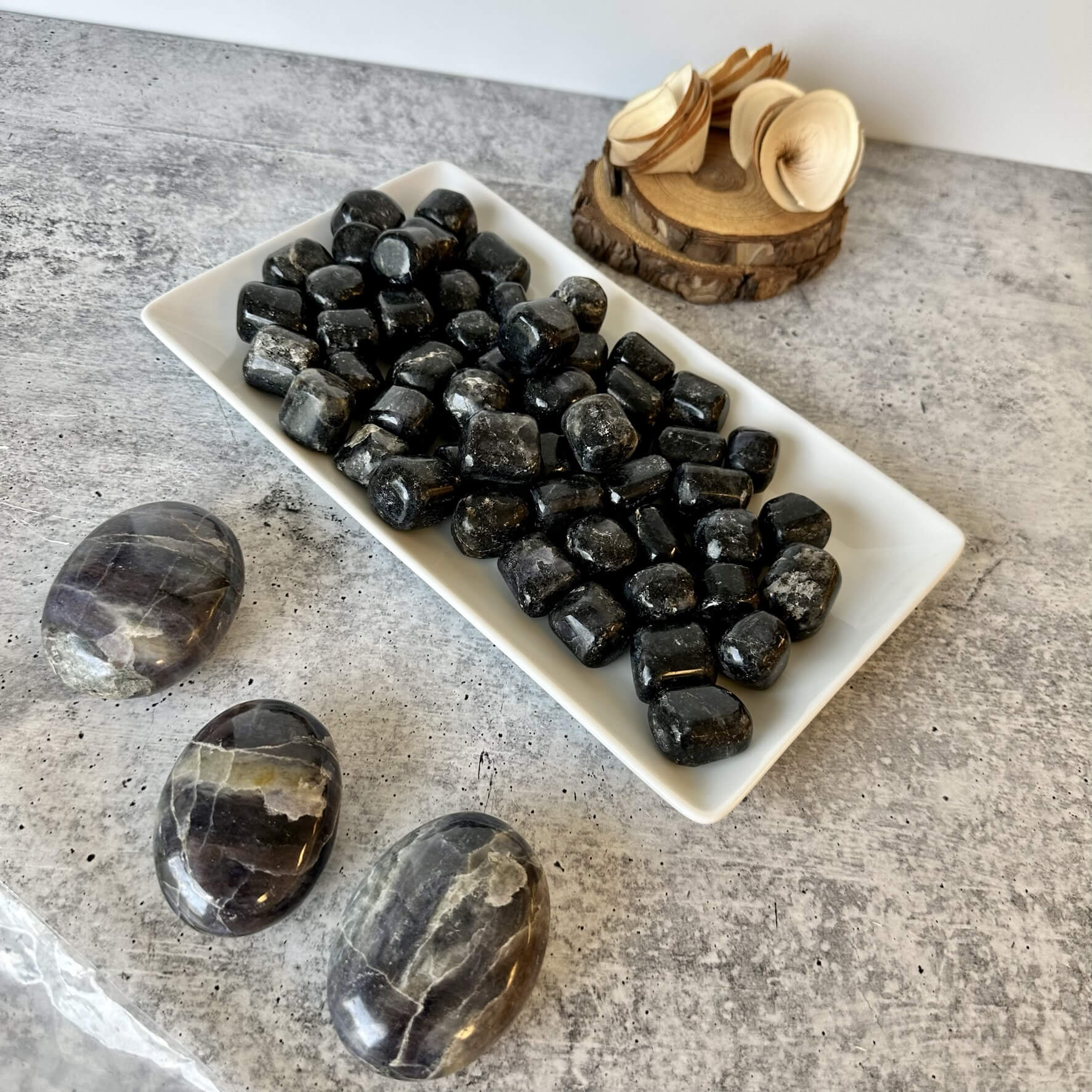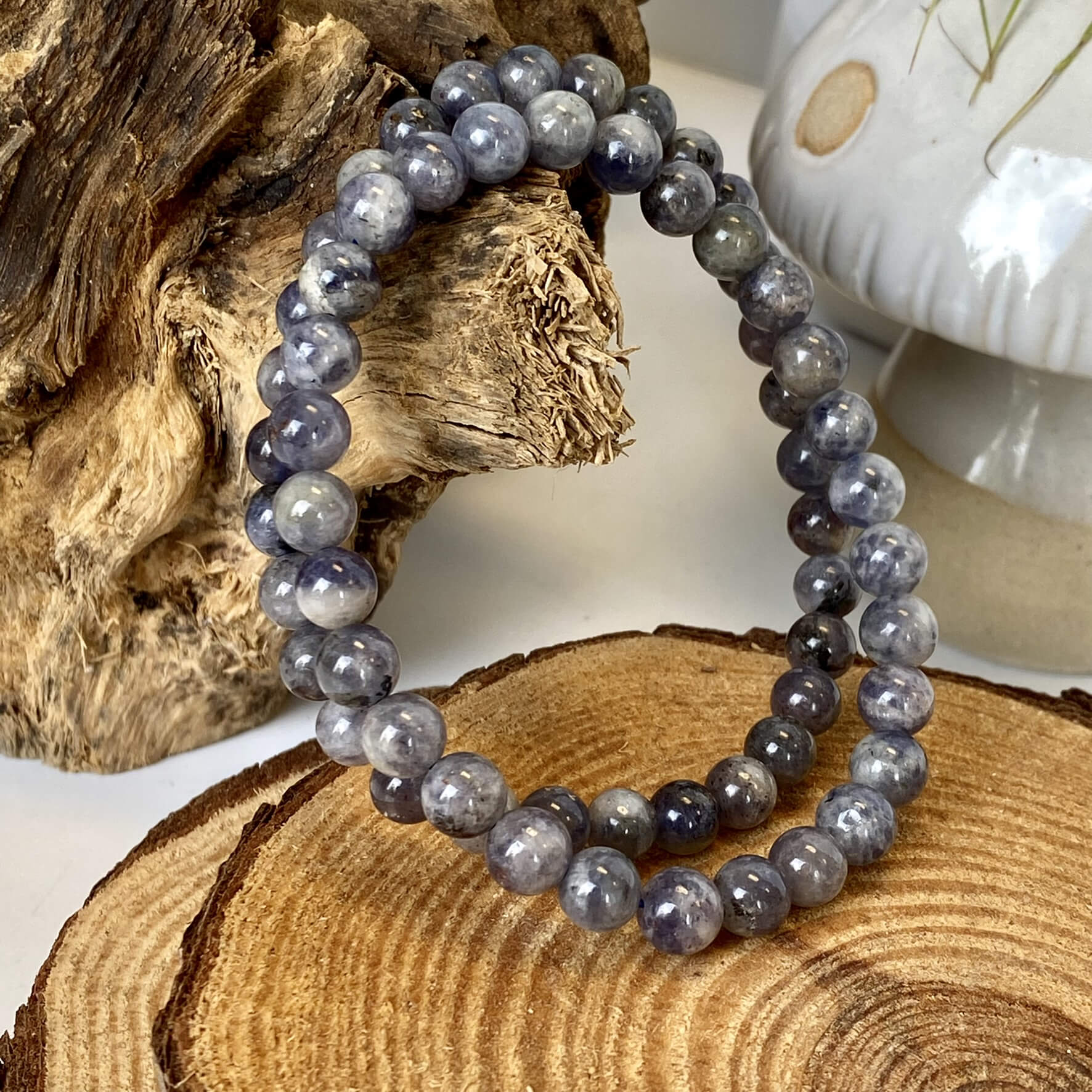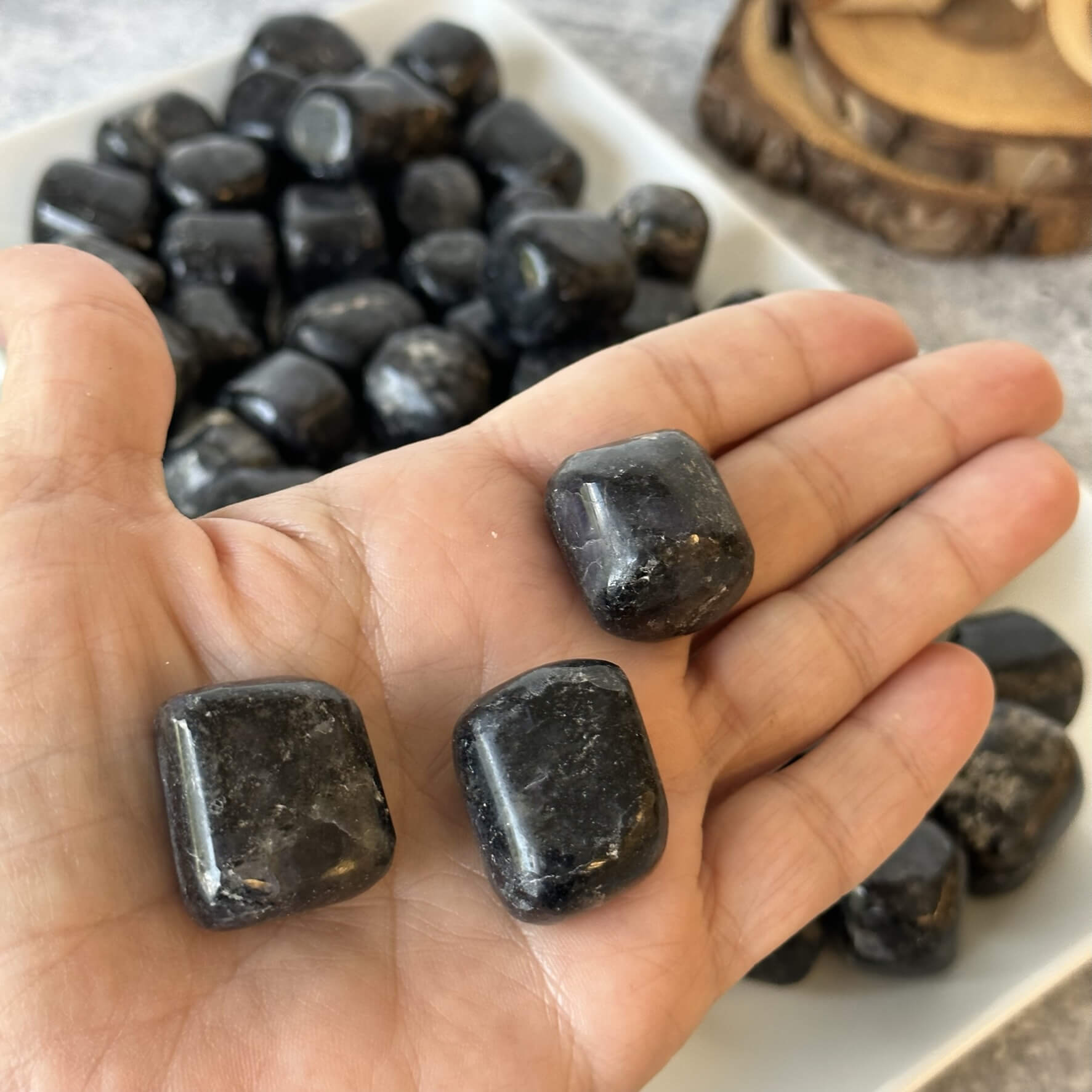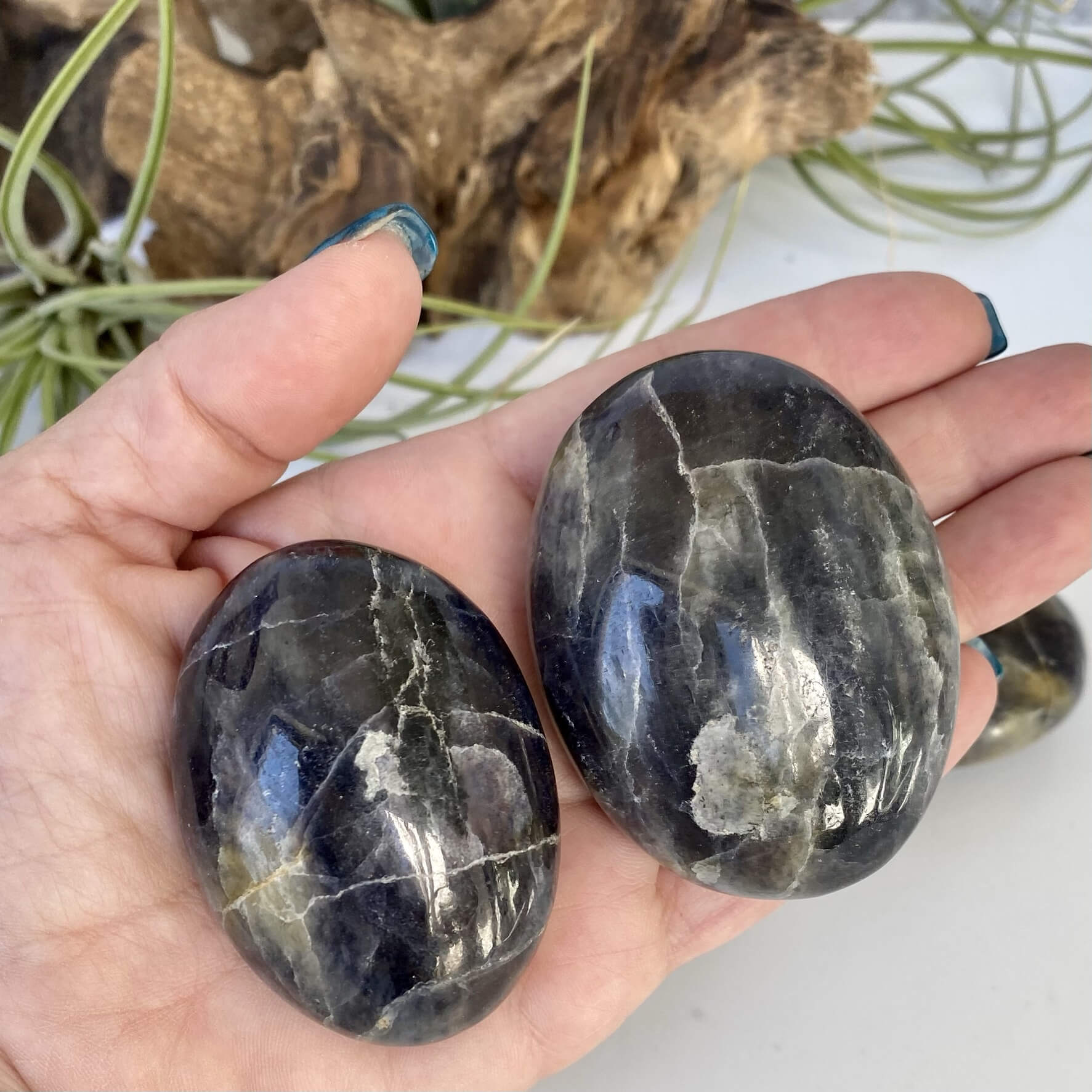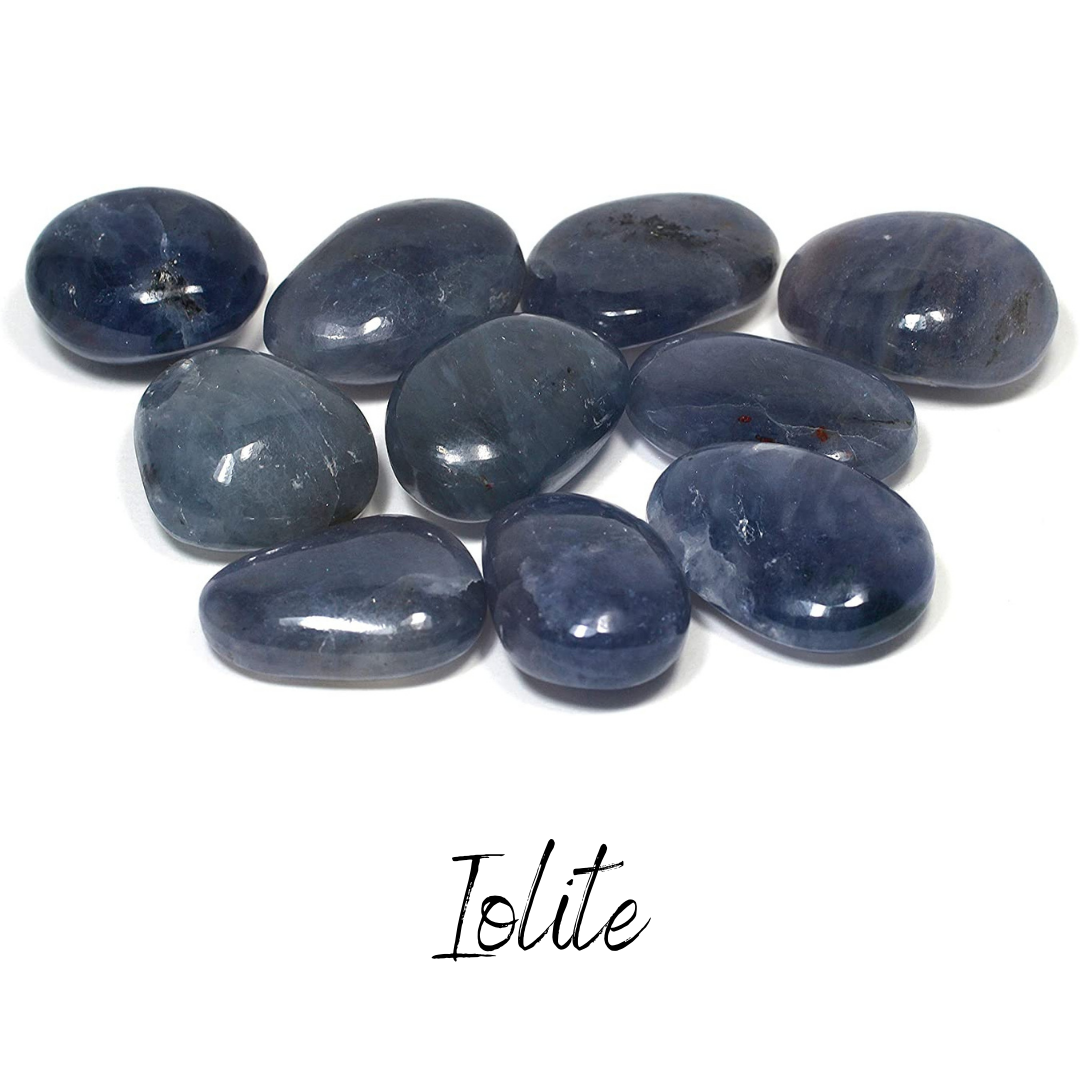
Iolite
Water Sapphire
Dichroite
Cordierite
Cordierite
Key Words:
Improves Feeling of Disorientation · Travel Protection · Creative Self-Expression · Family Dilemmas · Releasing Causes of Addiction · Calming · Sleep Aid
Improves Feeling of Disorientation · Travel Protection · Creative Self-Expression · Family Dilemmas · Releasing Causes of Addiction · Calming · Sleep Aid
Iolite is a deep violet-to-blue crystal known for its striking ability to display different colors depending on the angle of light—a property called pleochroism. From one angle, it may appear bluish-violet; from another, pale or even colorless. This optical effect once led to its nickname “water sapphire,” though it is not related to sapphire at all.
The name Iolite comes from the Greek word ios, meaning “violet.” Its strong visual presence and layered symbolism make it a favorite for those seeking clarity, personal direction, and emotional balance.
According to Norse legend, thin slices of Iolite were once used by Viking navigators to locate the position of the sun on cloudy days—earning it the name “Viking Compass Stone.” While we can’t prove this legend with certainty, the association with direction, orientation, and safe travels continues today.
Iolite is often chosen by those experiencing disorientation, chronic distraction, or emotional imbalance. It’s considered helpful for people struggling to feel grounded or focused, especially during times of transition or personal stress.
This stone is also appreciated for its ability to promote restful sleep and mental clarity, making it a thoughtful addition to nighttime routines or meditation practices. It encourages calm, positive thinking and offers the emotional distance needed to see situations more clearly—especially in family dynamics or creative blocks.
Iolite is sometimes given as a farewell gift to students, travelers, or loved ones starting a new chapter. Its energy is believed to support both safe journeys and the courage to return home to oneself.
Because of its connection to personal insight and independence, Iolite is also used by those working through patterns of addiction, people-pleasing, or unmet family expectations. It reminds us that our true path doesn’t have to match anyone else’s and supports the steady release of stories and pressures that no longer serve.
Whether used as a travel companion, a creative support, or a gentle guide back to clarity, Iolite carries a frequency of calm strength, quiet insight, and hope.

